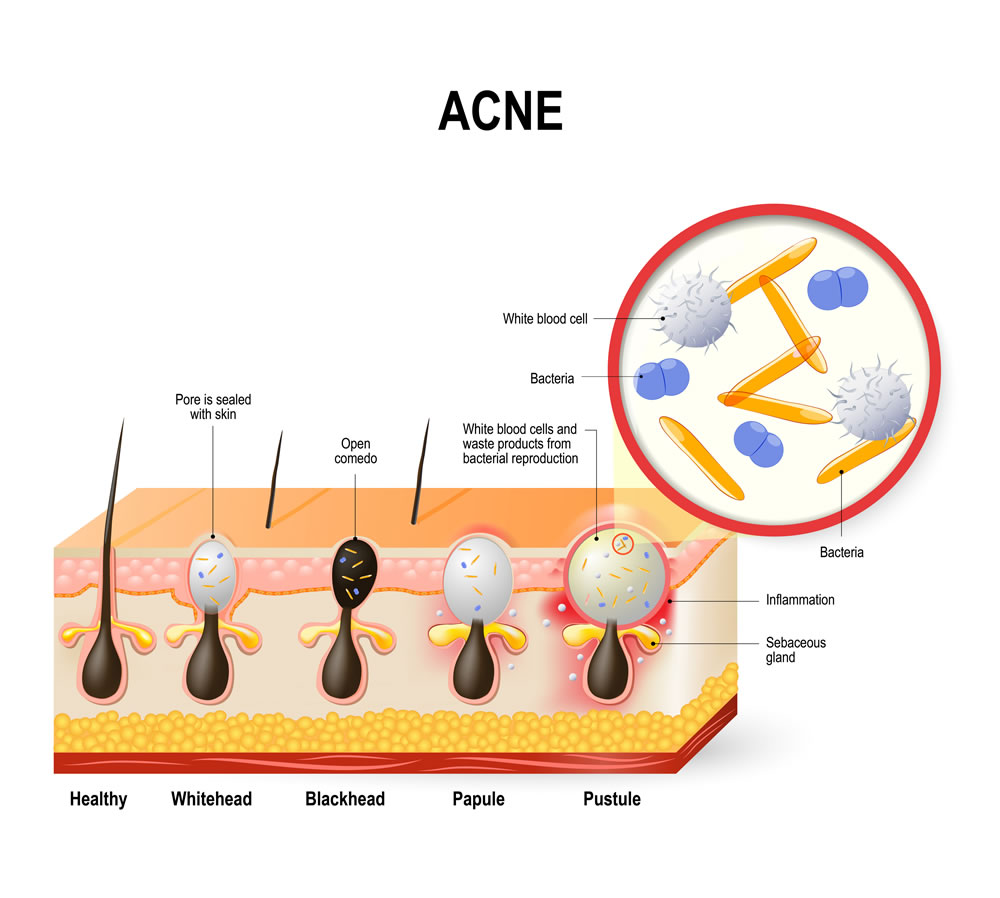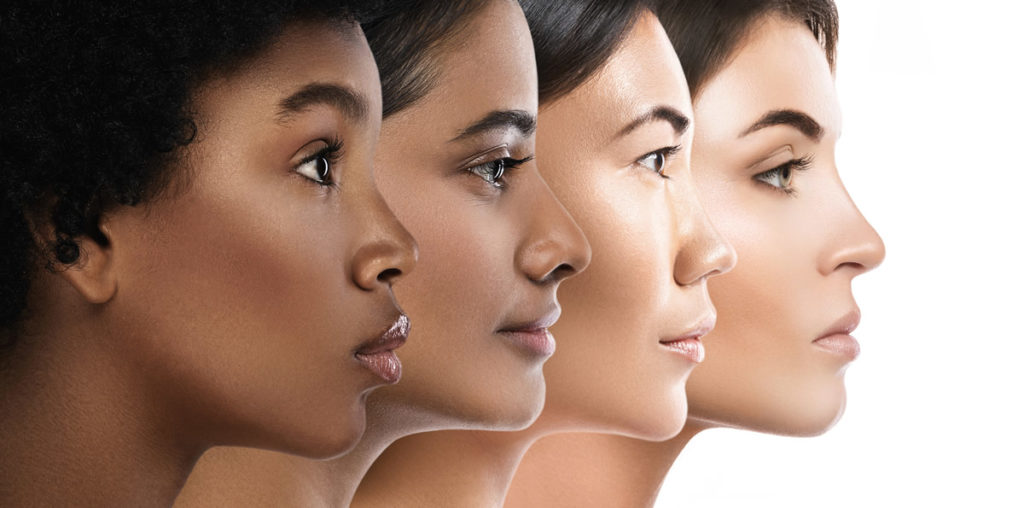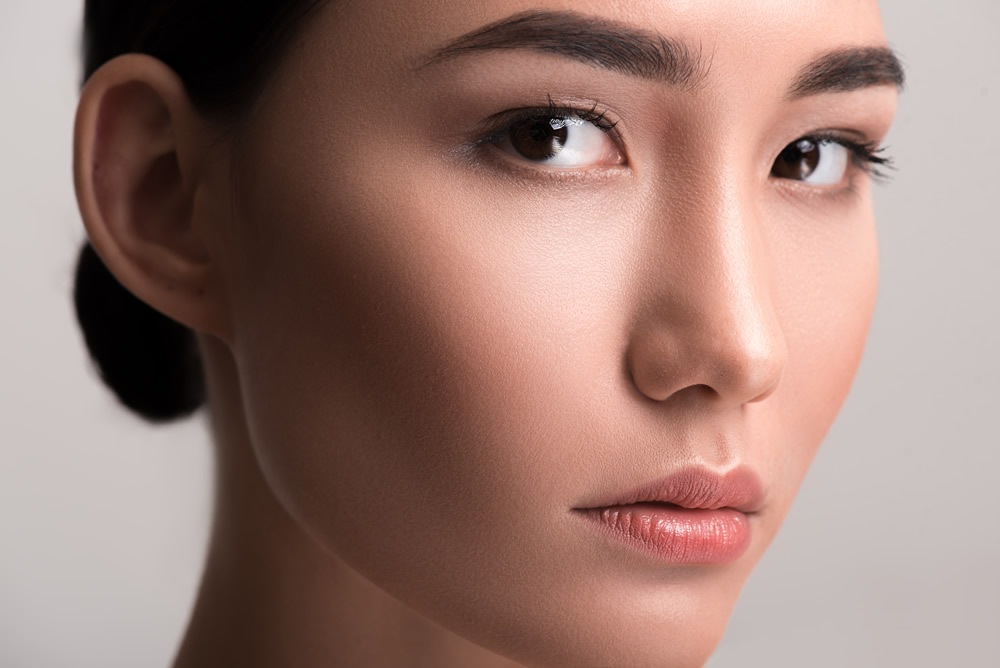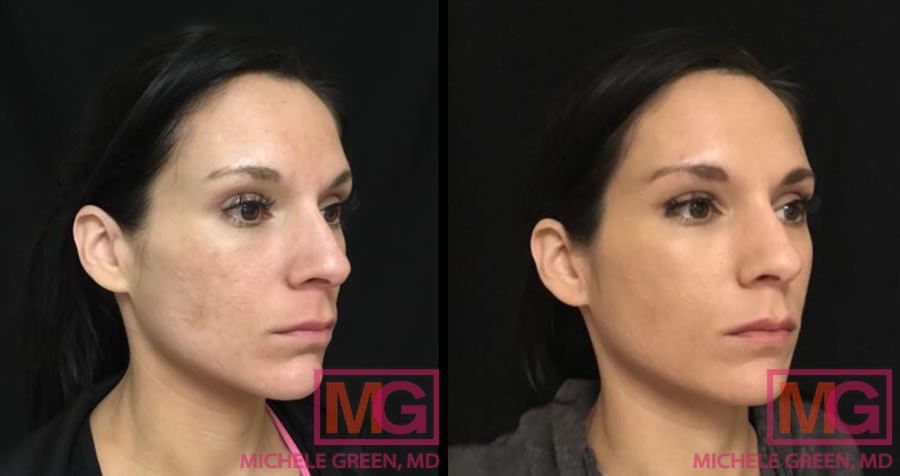Where Acne is and What it Means
Acne may be one of the most identifiable skin diseases: according to the American Academy of Dermatology Association, acne affects up to 50 million Americans annually. Though acne breakouts are common, it can be difficult to pinpoint the exact cause of those pesky pimples. However, when acne breakouts develop in the same area of the face or body, they often do have an underlying cause. When these causes or triggers are addressed, it can help to clear up skin and reduce the likelihood of a reappearing zit.
When it comes to diagnosing the cause of an acne flare-up, expert medical advice is key. Through careful analysis of breakout zones, medical history, and external factors, board-certified dermatologist Dr. Michele Green is able to determine the source of most acne breakouts. Dr. Green works with her patients to pinpoint acne patterns in order to differentiate between genetic, hormonal, or irritant-caused acne. The better the medical guidance you receive, the faster you can achieve clear skin.
If you’re frustrated with reoccurring or prominent acne breakouts on the face or body, board-certified dermatologist Dr. Michele Green is here to help. With over 25 years of experience of cosmetic dermatology in NYC, including acne treatments, acne scarring, lasers, Botox, Juvederm, and other non-invasive cosmetic treatments, Dr. Green will give you beautiful, clear skin. Whether its acne breakouts on your face, chest, back, or buttocks, Dr. Green has the latest technology and over-the-counter products to treat clogged pores and clear up your skin.

Does where your acne is tell you the cause of your breakouts?
In general, the cause of acne vulgaris – commonly known as “acne” – is a build-up of sebum or oil on the surface of the skin, which can clog pores. This clogging of the skin’s pores can then become further irritated by the buildup of dead skin cells and debris. Many people have oil glands that produce just the right amount of sebum to protect the surface of the skin, but overactive oil production often brings on a blemish or two. Changes in oil production from sebaceous glands, changes in cell turnover, and other fluctuations in the body all help to determine whether your skin is “glowing up” or “blowing up,” so to speak.
Though diagnosing the cause of acne does require an expert eye, repeated breakouts in the same area of the face or body do tend to have a common underlying cause. This cause can vary from hormonal imbalances to chronic stress to irritation from external factors, and oftentimes acne developing on specific parts of the face or body can help to pinpoint just what is behind an acne flare-up.
Common Types of Acne Breakouts
Papules
Papule are small, red bumps that form on the surface of the skin when an oil gland is clogged with bacteria and excess sebum. The blocked poor irritates the surrounding tissue on the dermis, which in turn reddens the skin.
Pustules / Pimples
Pustules are acne lesions that are bulging bumps, typically filled with pus. They form when a blocked pore gets infected with bacteria, and appear inflamed and reddened surrounding a white center. It’s important not to “pop” a pustule, as this can have negative side effects wherein the pus spreads from the center of the pimple to the surrounding pores, thus creating a more widespread infection.
Comedones / Blackheads & Whiteheads
Blackheads are a type of comedone that has a black dot alone the surface of the skin. Blackheads are known as closed comedones, whereas whiteheads are referred to as open condones. Comedones involve pore clogging that cannot be squeezed or popped, which means that an extraction is imperative to prevent scarring. Dr. Green is an expert in comedone extraction, and recommends the Hydrafacial as a means to extract blackheads and refresh the skin.
Cystic Acne Treatment
Cystic acne is a form of severe acne that develops due to deep infections that form under the surface of the skin, creating a nodule filled with trapped bacteria. Cystic acne represents an infection deep within the skin, and these cysts are primarily filed with pus. Proper treatment of cystic acne is vital in order to prevent scarring and thoroughly heal the infection. Dr. Green typically relies on a combination of topical treatments and oral medications, such as Doxycycline or Accutane, in order to treat cystic acne.
Where your acne is and what it means
Depending on where acne develops, Dr. Green can determine what type of acne you are suffering from, as well as its potential causes, through a simple virtual or in-office consultation. For young adults, acne is typically caused due to hormonal changes that accompany puberty, causing an increase in sebum production on the skin. When it comes to adult acne, the causes are often more varied, and can be exacerbated by shifts in hormone levels such as androgens, introducing new skin or hair products, or prolonged stress that has affected overall health and wellness.
Where acne is on your face and what it means
Where acne develops on your face can indicate a lot about what might be triggering the acne flare-up. For example, for patients who experience pimples in the same spot over and over, repeated gestures are often the cause. Resting your chin in your hand while at the computer, touching your face in the same location over and over, and picking or squeezing zits can all cause acne to appear in the same location.
Additionally, it’s important to think about what interacts with that area of the face each day: How often are you cleaning your makeup brush? When was the last time you cleaned your cell phone? Are your pillowcases in need of a wash? These simple interactions can often lead to an increase in bacteria on the surface of the skin, and is commonly referred to as acne mechanica, or acne that is caused by continual interaction with an object or device.

Face Mapping: What does acne mean on your face?
In addition to external causes, recurring acne in one area of the face can often be due to a particular bodily cause, such as hormone shifts, stress, or dietary issues. Face mapping – which is derived from ancient Chinese and Ayurvedic practices – is the practice of identifying the cause of skin irritation, depending on the location of the face.
What is hormonal acne?
If you suffer from breakouts along the chin or jawline, you may very well be suffering from hormonal acne. Hormonal acne tends to appear in the same area and is often cyclical, meaning it gets better or worse along a monthly schedule. Hormonal acne is often stimulated when a patient produces more androgens (such as testosterone), which are linked to reproductive activity, hair growth, and male traits. Hormonal acne is more common in men than women, and can often be linked to a women’s menstrual cycle. For this reason, many women find that birth control pills can often clear up hormonal acne. Additionally, hormonal acne can occur in patients who are currently experiencing menopause, and for those who have hormonal imbalances caused by certain conditions like polycystic ovary syndrome (PCOS).
Though hormonal acne can develop as a blackhead caused by clogged hair follicles, it commonly appears in the form of cystic acne. This is often why hormonal acne reappears in the same location.
What Causes Breakouts Along the jawline
Breakouts along the jawline can also be triggered by other factors other than hormones alone. For those who are experiencing high stress, or eating an increase in dairy or sugar products, oil glands can be triggered to overproduce sebum on the surface of the skin.
If you suffer from repeated acne on a monthly cycle, or have experienced cystic acne along the jawline, you likely are suffering from hormonal acne. Hormonal acne most commonly appears along the chin and jawline, and can be improved through various oral medications, topical treatments, and tailored skin care regimens.
How does stress acne show on the face?
Stress acne is a common form of adult acne that tends to affect the t-zone (the area from the forehead down through the nose and chin). If you have recently experienced an increase in stress, or have been dealing with chronic stress, stress hormones in the body, like cortisol, can encourage oil glands to go into overdrive, which increases the amount of sebum production. When combined with dead skin cells and bacteria on the surface of the skin, this excess oil production can create acne breakouts.
As stress acne is primarily caused by overactive sebaceous glands, breakouts tend to develop near the most active oil glands, which lie along the t-zone. In the case of a classic stress acne flare-up, patients tend to notice larger pores, redness, and an oily sheen.

Breakouts along the hairline or forehead
If you suffer from breakouts on the forehead or along the hairline, you may be dealing with irritation due to hair products. A variety of different shampoos, conditioners, and hair gels use ingredients like sodium lauryl sulfate and coconut oil, which tend to increase the amount of clogged pores on the surface of the skin. Additionally, if you suffer from dandruff, you may be dealing with irritation from pityrosporum, a type of fungus that lives on the surface of the skin. In this case, zinc pyrithione soap or over-the-counter ketoconazole shampoo can help to clear skin.
Where acne is on your body and what it means
In general, acne on the body is typically due to similar causes to traditional facial acne. When pores get clogged due to oil production elsewhere on the body, we can end up developing acne on the chest or back, even on the arms or the buttocks.
If you experience breakouts on your neck, you very well may be experiencing increased oil production due to hormonal changes. However, acne on the neck can also be due to irritation from hair products or sweat from exercise. Similarly, acne on the chest or back can often be due to a buildup of sweat or oil after exercise, or irritation due to tight clothing. If you’re suffering from acne on the body, oftentimes switching to more breathable fabrics and rinsing off immediately after exercise can help to improve your skin. Additionally, you can try an acne-fighting body wash or cleanser, such as Dr. Green’s MGSKINLABS Pore Minimizing Cleanser.
What skin care routines can help to treat acne breakouts?
To reduce the appearance of acne on the skin, Dr. Green always recommends sticking to a skin routine that features a gentle exfoliating cleanser, non-comedogenic lotion, and topical treatments to help treat and clear acne breakouts. When you work with Dr. Green, she’ll be able to determine an acne treatment plan that includes a simple and effective skincare routine to reduce and prevent the further development of acne.
Dermatologist-Recommended Skin Care Products and Topical Treatments
There are several treatments that can help to clear skin from acne breakouts. For topical treatments, it’s best to look for active ingredients such as benzoyl peroxide, retinoids, and salicylic acid. These active ingredients can help to reduce bacteria on the skin and increase cellular turnover, which in turn reduces the amount of pimples on the skin. Topical antibiotics can also help to eliminate bacterial infections on the dermis.
When it comes to spot-treatment gels, benzoyl peroxide creams can help to reduce inflammation and eliminate bacteria. Adapalene-based gels, such as Differin and Epiduo, can also be excellent when it comes to increasing cell turnover. When it comes to a skin care regimen, MGSKINLABS offers an innovative three-step acne treatment that uses a pore minimizing cleanser, glycolic and salicylic acid texturizing pads, and benzoyl peroxide spot-treatment to help clear skin and prevent future breakouts.
In-Office Treatments
If you’re frustrated by the appearance of acne on the skin, Dr. Green can offer expert medical advice to develop a treatment plan that meets your needs. Laser acne treatments such as the VBeam laser can help to treat redness and inflammation due to acne, and Blue and Red Light therapies can help to kill acne-causing bacteria, as well as reduce the size of oil glands. Additionally, photodynamic therapy can help to eliminate bacteria using concentrated blue light to treat acne at its source.
When it comes to treating unwanted acne scars, Dr. Green is an expert in laser acne scar treatment via Fraxel and eMatrix lasers, as well as microneedling treatments such as Vivace, Subcision techniques and TCA cross. These techniques can all work to produce new collagen in the skin while retraining the skin’s natural memory to reduce the appearance of scarring.

Before and after: Acne scar treatment using eMatrix
Another excellent treatment for mild to moderate acne are custom chemical peels. Chemical peels are designed to exfoliate the top layers of the dermis, removing dead skin cells and exposing the healthy young layers of the skin. When it comes to treating acne, key ingredients like glycolic acid and trichloroacetic acids can help to stimulate cell turnover and reduce inflammation.
One of the most popular in-office treatments for acne are Hydras. The Hydrafacial is a revolutionary three-part facial that uses cleansing, exfoliating, and infusion to clear out sebum, dead skin cells, and bacteria from pores, as well as infuse the skin with restorative serums. The Hydrafacial is used to treat acne-prone skin, as well as skin that is reddened, “dull,” or showing various signs of aging.
If you’re frustrated by the appearance of acne anywhere on the body, Dr. Green can provide you with the best tailored made treatment options for your specific type of acne. Whether it is facial acne, bacne (back acne), chestne (chest acne), or acne acne anywhere else on the body, Dr. Green will customize a unique acne treatment plan for you. Please contact Dr. Green online or call our New York City office at 212-535-3088 to develop your tailored skin care plan with Dr. Green for beautiful clear skin today.
 212-535-3088
212-535-3088